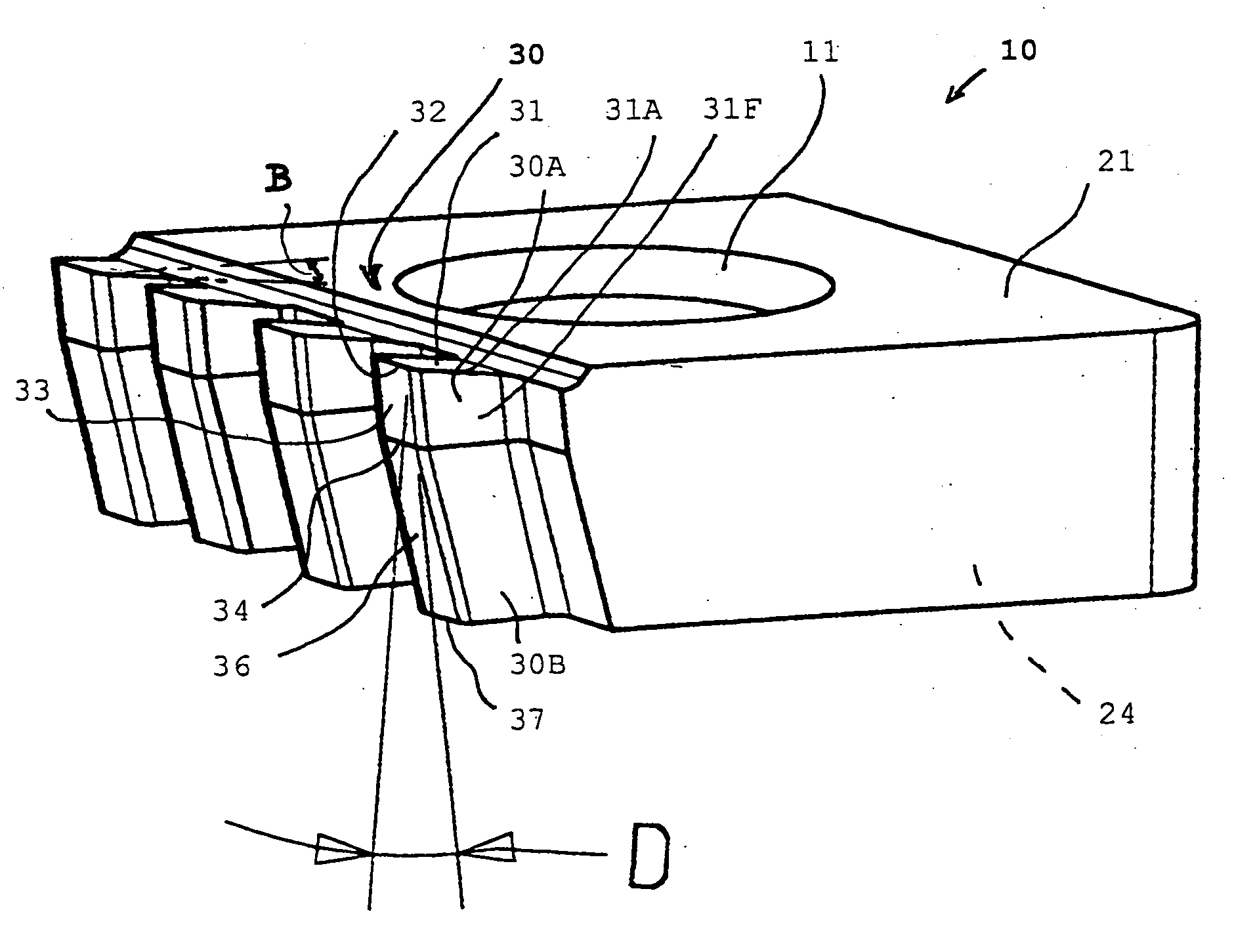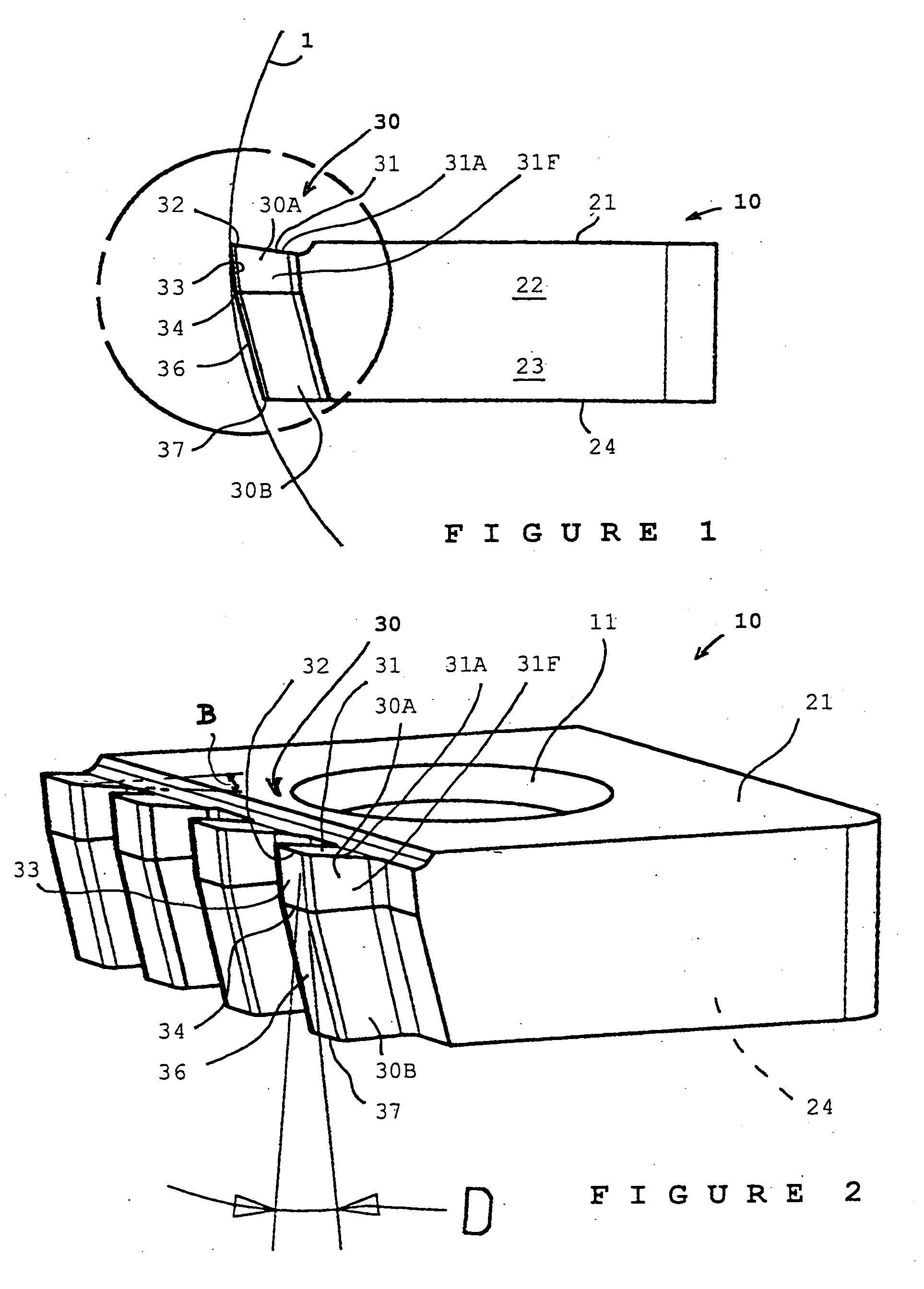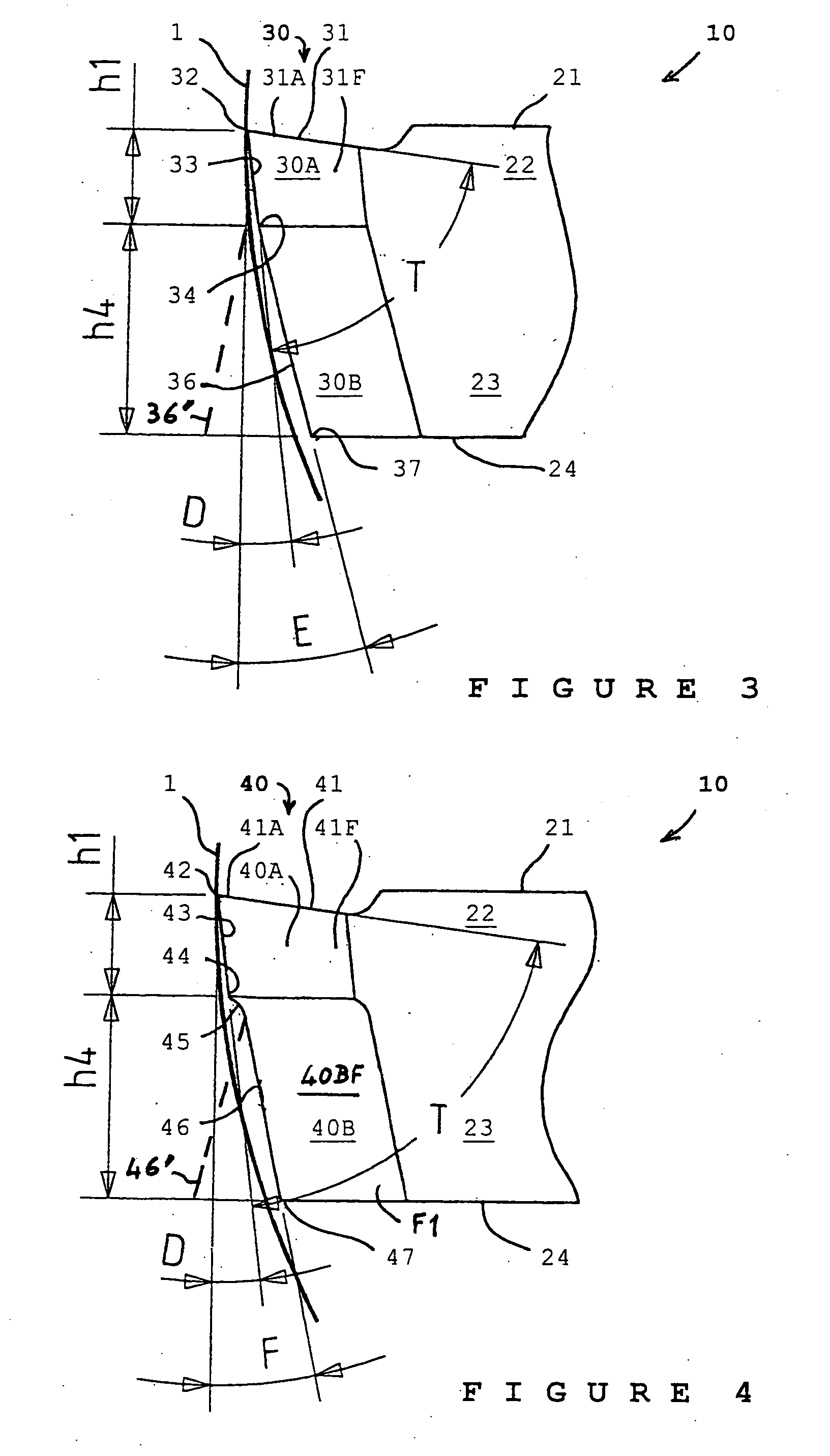Cutting insert including a bracing layer
a cutting insert and bracing technology, applied in the direction of turning tools, milling equipment, turning apparatus, etc., can solve the problems of high cost, increased thickness, and increased risk of chipping or nicking,
- Summary
- Abstract
- Description
- Claims
- Application Information
AI Technical Summary
Benefits of technology
Problems solved by technology
Method used
Image
Examples
Embodiment Construction
[0037] FIGS. 1, 3 and 2 show, respectively, in cross-section and in perspective, an insert 10 in position for tapping a circular orifice 1 of a work-piece. Insert 10 is pierced here by a hole 11, here vertical, for receiving a screw for removable attachment to a tool holder, not shown.
[0038] Insert 10 has here substantially the shape of a rectangular parallelepiped, with a front face or surface 21 and a back face or surface 24. For the sake of simplicity, faces 21 and 24 are supposed here to be horizontal. One of four lateral, horizontally extending teeth seen in FIG. 2 bears reference number 30 in FIGS. 1 to 3. Tooth 30 has a determined cutting height represented by its lateral extension, projecting from a virtual reference plane, substantially vertical in the figures, tangent to the valleys separating the teeth. Tooth 30 comprises a front face, or cutting face, 31 forming part of front face 21, but which has been ground so as to hollow it out slightly obliquely towards the centre ...
PUM
| Property | Measurement | Unit |
|---|---|---|
| Fraction | aaaaa | aaaaa |
| Fraction | aaaaa | aaaaa |
| Current | aaaaa | aaaaa |
Abstract
Description
Claims
Application Information
 Login to View More
Login to View More - R&D
- Intellectual Property
- Life Sciences
- Materials
- Tech Scout
- Unparalleled Data Quality
- Higher Quality Content
- 60% Fewer Hallucinations
Browse by: Latest US Patents, China's latest patents, Technical Efficacy Thesaurus, Application Domain, Technology Topic, Popular Technical Reports.
© 2025 PatSnap. All rights reserved.Legal|Privacy policy|Modern Slavery Act Transparency Statement|Sitemap|About US| Contact US: help@patsnap.com



